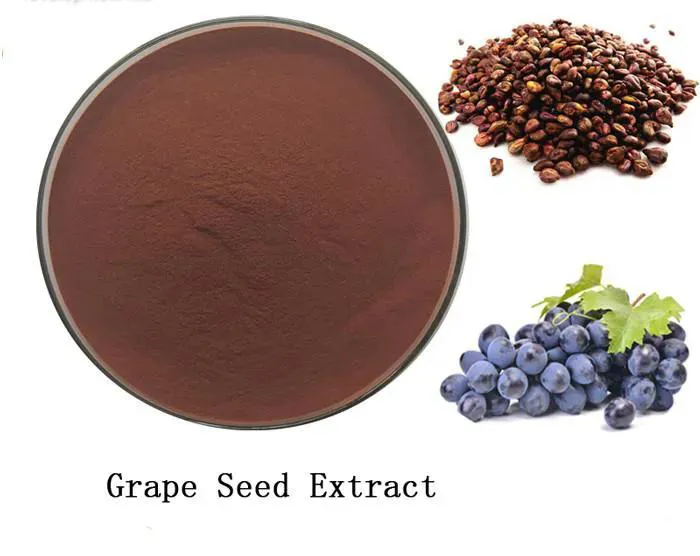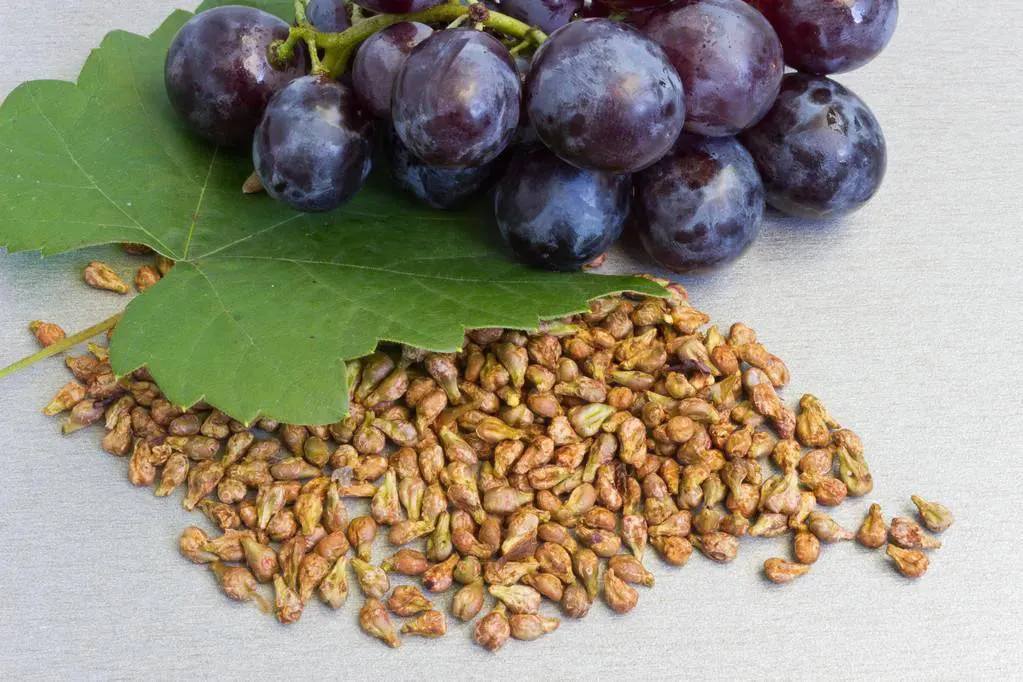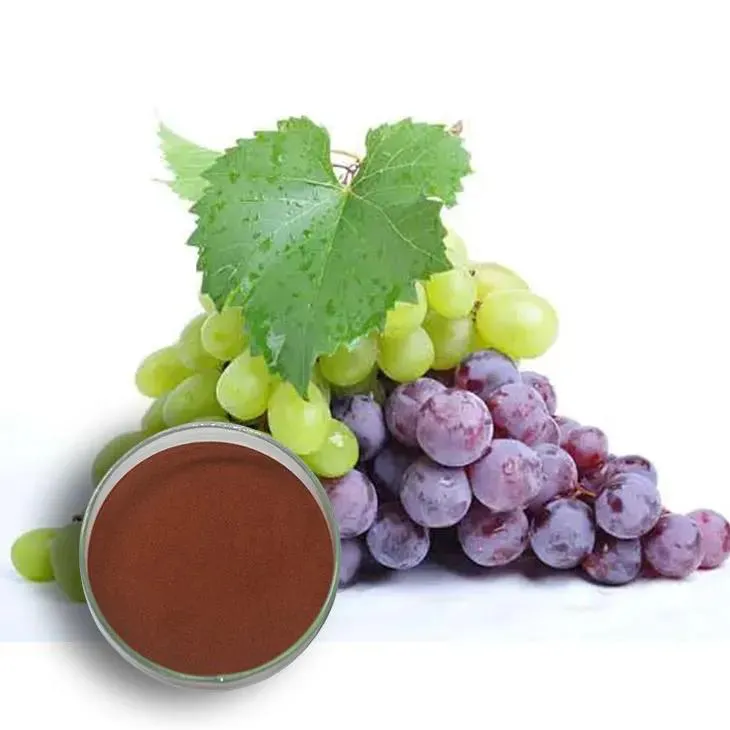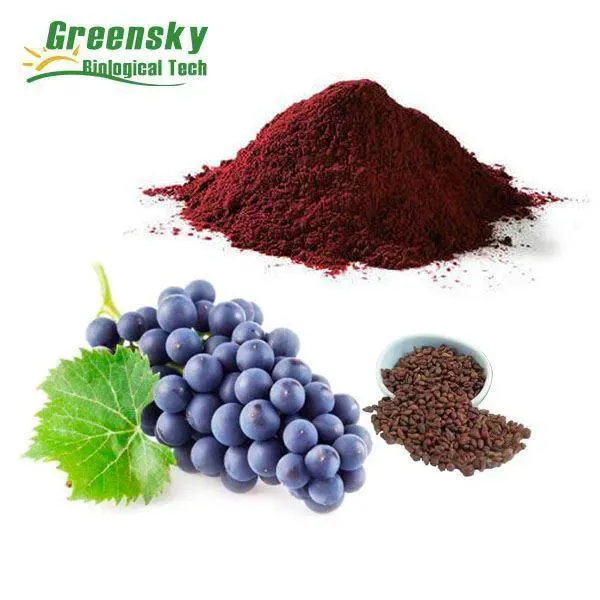- 0086-571-85302990
- sales@greenskybio.com
Balancing Risk and Benefit: Evaluating the Safety and Toxicity of Grape Seed Extract
2024-08-20

1. Introduction
Grape Seed Extract has emerged as a popular supplement in recent years, touted for its numerous potential health benefits. These range from antioxidant properties to possible cardiovascular and anti - inflammatory effects. However, as with any supplement or natural product, it is essential to thoroughly evaluate its safety and toxicity. This evaluation is crucial not only for consumers who are considering using Grape Seed Extract but also for healthcare providers who may need to advise on its use. Understanding the balance between the potential risks and benefits is key to making informed decisions regarding its consumption.

2. Chemical Composition of Grape Seed Extract
Grape seed extract is rich in various bioactive compounds. Proanthocyanidins are one of the major components, which are a type of flavonoid. These compounds are known for their strong antioxidant activity. They can scavenge free radicals in the body, which are often associated with cellular damage and various diseases.
Another important group of compounds in grape seed extract are phenolic acids. These include gallic acid and caffeic acid, among others. Phenolic acids also contribute to the antioxidant capacity of the extract. In addition, grape seed extract contains small amounts of vitamins such as vitamin E, which further enhance its antioxidant properties.

3. Potential Health Benefits
3.1. Antioxidant Effects
The antioxidant properties of grape seed extract are perhaps its most well - known benefit. Free radicals are highly reactive molecules that can damage cells, proteins, and DNA. By neutralizing these free radicals, grape seed extract may help reduce the risk of chronic diseases such as cancer, heart disease, and neurodegenerative disorders. In vitro and in vivo studies have shown that the proanthocyanidins in grape seed extract can effectively scavenge free radicals, protecting cells from oxidative stress.
3.2. Cardiovascular Health
There is evidence to suggest that grape seed extract may have positive effects on cardiovascular health. It may help lower blood pressure, improve blood lipid profiles (such as reducing LDL cholesterol and increasing HDL cholesterol), and inhibit platelet aggregation. These effects could potentially reduce the risk of heart attacks and strokes. For example, some studies have shown that grape seed extract can relax blood vessels, leading to a decrease in blood pressure.
3.3. Anti - inflammatory Effects
Chronic inflammation is associated with many diseases, including arthritis, diabetes, and certain cancers. Grape seed extract has been shown to possess anti - inflammatory properties. It can modulate the immune system and reduce the production of inflammatory cytokines. This may help in the management of inflammatory conditions and potentially prevent the development of related diseases.

4. Potential Side Effects
4.1. Gastrointestinal Disturbances
One of the most common side effects reported with grape seed extract is gastrointestinal discomfort. This can include symptoms such as nausea, vomiting, diarrhea, and abdominal pain. These symptoms may be more likely to occur at higher doses or in individuals with sensitive stomachs. For example, some people may experience digestive problems when they first start taking grape seed extract, but these symptoms may subside over time as the body adjusts.
4.2. Allergic Reactions
Although rare, allergic reactions to grape seed extract are possible. People who are allergic to grapes or other grape - related products may be at risk of developing an allergic reaction to the extract. Allergic symptoms can range from mild rashes and itching to more severe reactions such as difficulty breathing and anaphylactic shock. It is important for individuals with known allergies to grapes to exercise caution when considering grape seed extract.
4.3. Interaction with Medications
Grape seed extract may interact with certain medications. For instance, it may enhance the blood - thinning effects of anticoagulant medications such as warfarin. This could increase the risk of bleeding. Additionally, it may interact with medications that are metabolized by the liver, potentially affecting their efficacy or increasing the risk of side effects. Therefore, it is crucial for individuals taking medications to consult their healthcare provider before starting grape seed extract.

5. Toxicity Studies
Several toxicity studies have been conducted on grape seed extract. In general, at normal recommended dosages, it has been shown to be relatively safe. However, high - dose studies in animals have revealed some potential toxic effects. For example, in some animal models, extremely high doses of grape seed extract were associated with liver and kidney toxicity. But it is important to note that these doses are far beyond what would be typically consumed by humans.
Long - term toxicity studies in humans are still somewhat limited. However, current evidence suggests that when used within the recommended dosage range, the risk of toxicity is low. Nevertheless, more research is needed to fully understand the long - term effects of grape seed extract on human health.
6. Recommended Dosages
The recommended dosage of grape seed extract can vary depending on several factors, such as the intended use, individual health status, and age. For general antioxidant and health - promoting effects, a typical dosage may range from 100 - 300 mg per day. However, for specific health conditions, such as cardiovascular disease or inflammation, higher dosages may be recommended under the guidance of a healthcare provider.
It is important to follow the recommended dosages carefully. Taking too much grape seed extract can increase the risk of side effects, while taking too little may not provide the desired health benefits.
7. Conclusion
Grape seed extract offers a range of potential health benefits, including antioxidant, cardiovascular, and anti - inflammatory effects. However, it also has the potential for side effects and interactions with medications. While at normal recommended dosages it appears to be relatively safe, toxicity at high doses has been observed in animal studies. To make an informed decision about using grape seed extract, it is essential to consider the balance between the potential risks and benefits. Consumers should also consult with their healthcare providers, especially if they have underlying health conditions or are taking medications. With proper evaluation and guidance, grape seed extract can be a valuable addition to a healthy lifestyle for some individuals.
FAQ:
What is the chemical composition of grape seed extract?
Grape seed extract contains a variety of compounds. It is rich in polyphenols, especially proanthocyanidins. These are antioxidants that can have various effects on the body. It also contains flavonoids and other bioactive substances which contribute to its potential health - promoting properties.
What are the potential side effects of grape seed extract?
Some people may experience mild side effects such as nausea, dizziness, or headache when taking grape seed extract. In rare cases, it may cause allergic reactions, especially in those who are allergic to grapes or related products. High doses may also lead to digestive problems like stomach upset.
How is the recommended dosage of grape seed extract determined?
The recommended dosage of grape seed extract can vary depending on factors such as age, health status, and the purpose of use. Generally, for general health promotion, a relatively low dose may be sufficient. However, for specific health conditions, a healthcare provider may recommend a higher dose. It is often based on research studies that evaluate the efficacy and safety at different dosage levels.
Can grape seed extract interact with medications?
Yes, grape seed extract may interact with certain medications. For example, it may interact with blood - thinning medications as it has anti - platelet effects. This could potentially increase the risk of bleeding. It may also interact with medications that are metabolized by the liver, as some of the compounds in grape seed extract can affect liver enzyme activity.
Is grape seed extract safe for long - term use?
While there is evidence to suggest that grape seed extract has potential health benefits, its long - term safety is still an area of ongoing research. In general, when taken at appropriate dosages, it may be safe for long - term use. However, long - term use may increase the risk of potential side effects, especially if the dosage is not properly regulated. Regular monitoring may be necessary, especially for those with pre - existing health conditions.
Related literature
- Safety and Toxicity of Grape Seed Extract: A Review"
- "Evaluating the Benefits and Risks of Grape Seed Extract in Health Promotion"
- "Grape Seed Extract: Chemical Composition, Pharmacological Effects, and Safety Considerations"
- ▶ Hesperidin
- ▶ citrus bioflavonoids
- ▶ plant extract
- ▶ lycopene
- ▶ Diosmin
- ▶ Grape seed extract
- ▶ Sea buckthorn Juice Powder
- ▶ Beetroot powder
- ▶ Hops Extract
- ▶ Artichoke Extract
- ▶ Reishi mushroom extract
- ▶ Astaxanthin
- ▶ Green Tea Extract
- ▶ Curcumin Extract
- ▶ Horse Chestnut Extract
- ▶ Other Problems
- ▶ Boswellia Serrata Extract
- ▶ Resveratrol Extract
- ▶ Marigold Extract
- ▶ Grape Leaf Extract
- ▶ blog3
- ▶ blog4
- ▶ blog5
-
Chaste Berry Extract
2024-08-20
-
Resveratrol extract
2024-08-20
-
Clove Powder
2024-08-20
-
Mulberry leaf Extract
2024-08-20
-
Fenugreek Extract Powder
2024-08-20
-
Artichoke Leaf Extract
2024-08-20
-
Echinacea Extract
2024-08-20
-
Almond Extract Powder
2024-08-20
-
Grape Leaf Extract
2024-08-20
-
Citrus bioflavonoids
2024-08-20





















